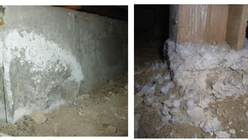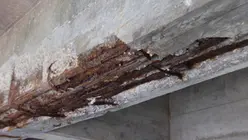Stress Losses in Prestressed Structural Elements

Stress losses in prestressed structural members are classified in two ways as time dependent and instantaneous losses. The shrinkage of the concrete, the creep of the concrete and the loosening of the steel are time dependent losses. On the other hand, losses due to elastic shortening loss, friction loss and anchor slippage are instantaneous losses. Loss of elastic shortening, shrinkage of concrete, creep of concrete, loosening of steel occur in both post-tensioned and pre-stressed systems, while losses due to friction loss and anchor slippage occur only in post-tensioned systems.
Elastic shortening loss is the loss that occurs as a result of the shortening that occurs due to the shearing of the cable in the first tensioning and due to the compression force forcing the concrete mass in the longitudinal direction in post-tensioning. Elastic shortening loss is defined as ES in AASHTO. Since the concrete gains more strength in post-tensioning systems, elastic shortening loss is less in post-tensioned systems than in first-tensioning. Elastic shortening loss can be taken as half of the value found in the initial stretching for post-tensioning systems.
Shrinkage is the evaporation of the water not used in the reaction in the concrete and the shrinkage of the evaporated water without any external force effect due to the volume occupied by the evaporated water. Shrinkage is a time dependent event, it can take years. However, it is assumed that 50% of the shrinkage occurs 1 month after the transfer and 75% of the total shrinkage occurs 6 months after the transfer.
Creep is the increase in the deformation of the material under constant load with time. After the loaded element undergoes a sudden deformation with the application of the load, it makes an additional deformation that increases in the course of time. This phenomenon is called creep and this deformation that occurs over time is called delayed deformation or creep deformation due to creep.
When the steel exposed to high stresses is fixed to a workbench from both ends so that its length remains constant, it is observed that the stresses decrease after a while. The reduction of stresses in steel with time under constant length or constant deformation is called relaxation (relaxation). Applies to high values of relaxation stress. The relaxation properties of the prestressed steel and the prestress loss values resulting from the relaxation are given by the steel manufacturers. Like the creep of concrete, the relaxation of steel is also dependent on time. But while it takes years for the concrete to complete its creep, it takes 2-3 weeks for the steel to loosen. Steel reaches two-thirds of its final relaxation value in 12 hours. Creep deformation is almost non-existent until the end of relaxation.
In a prestressed structure, first elastic shortening losses, then relaxation losses of the steel and then losses due to shrinkage and creep occur.
In post-tensioned systems, the prestress reinforcement profile can be placed according to the shape of the moment diagram. In order to keep the cables stable, the cable sheath is fixed to the mold at regular intervals. Conditions such as sparse bracing of the sheath, ovalization of the sheath during concreting or vibration, differences in the actual form of the cable from its intended form, and the fact that the weight of the sheath and cable cause the cable to deviate from its calculated form cause irregularity and friction losses.
In all tension systems, some slippage of the anchor may occur during the transfer of the prestressing force of the steel from the tensioning device to the anchor. For this reason, tolerance is left in the anchor. The loss that will occur due to this shift is of great importance, especially for short elements. Anchor slip value is known to vary between about 2 and 10 mm, but 6 mm is generally accepted.














Comentarios